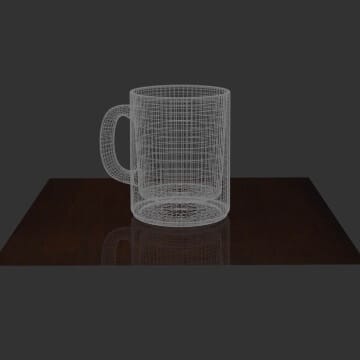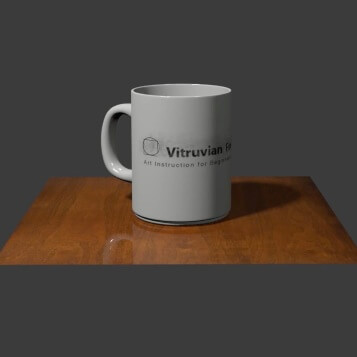In This Lesson:
The term "value" in artwork simply refers to lightness or darkness. Value development in our approach to drawing comes after the structure and proportion of objects has been developed in line and describes the effect of the light as it interacts with our subject.
Key Concepts

If we use lines and shapes to convey the structure and proportion of objects, we use values to convey the other half of the visual experience: the effect of the light. It’s important to keep them separate because they are very different things.
Let’s do an experiment. Look at any object in the room. Chances are you’re looking at something with clearly visible surfaces and defined edges – a chair, a table, a coffee cup... whatever. Part of it is illuminated, part of it is in shadow. You’re having an everyday visual experience of that object. Now turn off the lights. What happened? Whatever you were looking at hasn’t moved – all its physical properties are still there. But now you can’t see it, or if you can it looks drastically different. What’s changed? Obviously, it’s the light. The object itself is unaltered but appears different because the light has been adjusted.

What this little experiment demonstrates is that any object and the light that illuminates it are two completely different things. There is no lasting connection between them. In fact, we don’t actually see “things” at all; we see only the light they reflect. So in order for us to see anything there must be an interaction between light and matter, and it is merely their respective characteristics that determine how things will appear to us. Since matter and the light that reveals it to us are separate, it makes sense to address them separately when drawing – a primary linear stage, driven by lines and shapes, that describes the structure our subject, and a secondary tonal stage, driven by values, that describes the effects of the light.
What is “Value”?
“Value” simply refers to lightness or darkness. Shadows have a darker value than lights, for example, while a white object has a lighter value than a grey object. The full spectrum of values between black and white is called the “value scale” and like pitches in music, individual values have a specific place on that scale.
Think of the keys on a piano: each one is tuned to a precise pitch, higher or lower than the one next to it, and together they give us “notes” to play music. Different notes can be played together in chords which will each have a unique sound.
Value for artists is rather like pitch for musicians – different values in our drawing are like keys on a keyboard or strings on a guitar. Each one must be precisely calibrated relative to all the others in an image or our visual “music” will be out of tune.
The ability to discern values, the intervals between them, and reproduce those intervals on paper is key to capturing the effect of the light in drawing.


Hello, David!
I would like to know what type of paper you recommend to print the value scale and the examples on the progression section. Also in relation to printing, photographic paper is the better choice for the pictures in the solid section? If not, what type do you recommend.
Also in relation to solids, since importing a solid kit from Vitruvian would be turn expensive due to my currency being very weak against the dollar, trying to build one by myself is the most effective route I’ve found. What type of paint do you recommend to do this job? Since I’m new to the realm of art materials if you could recommend brands for this job I’d be very appreciated.
(sorry, if something didn’t sounded right, english is not my first language)
Thank you in advance,
Raphael
Hi Raphael,
For best results, I recommend printing the value scale on high-quality matte photo paper and use the highest quality print settings on your printer. Stay away from glossy photo paper for these exercises. Glossy paper will make the darkest values too dark for you to match with pencils.
For painting your solids, I suggest using neutral grey acrylic paint from Golden. You can see that here. The 3 objects in the Multi-solid Arrangement exercise are painted Value #5, Value #7, and white.
Hope that helps.